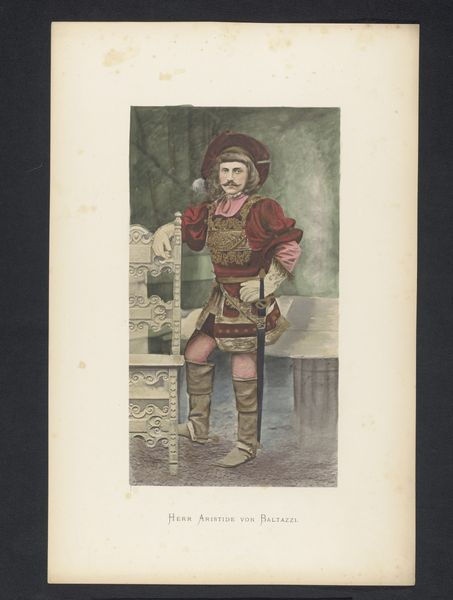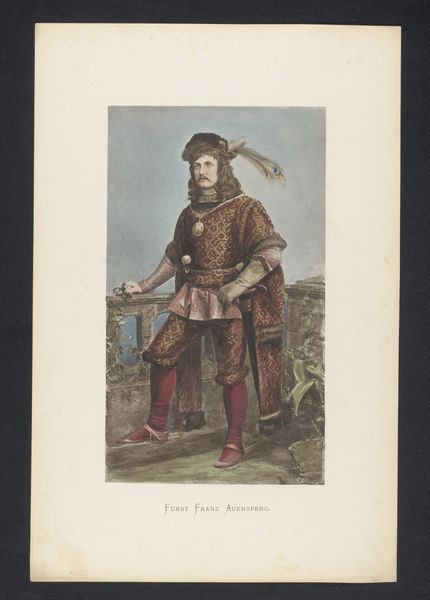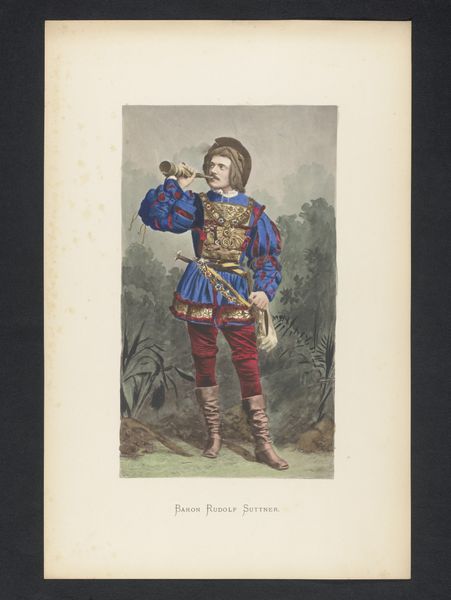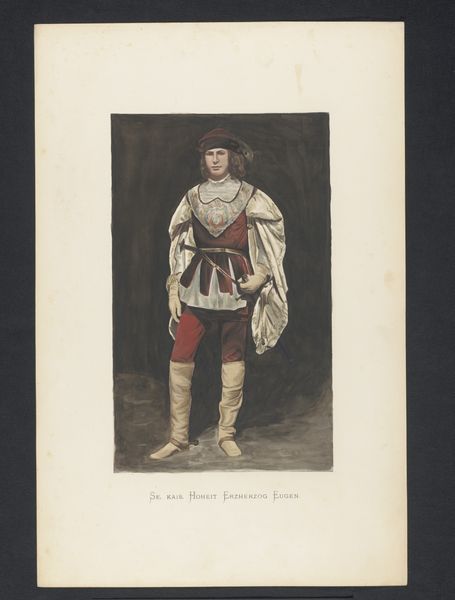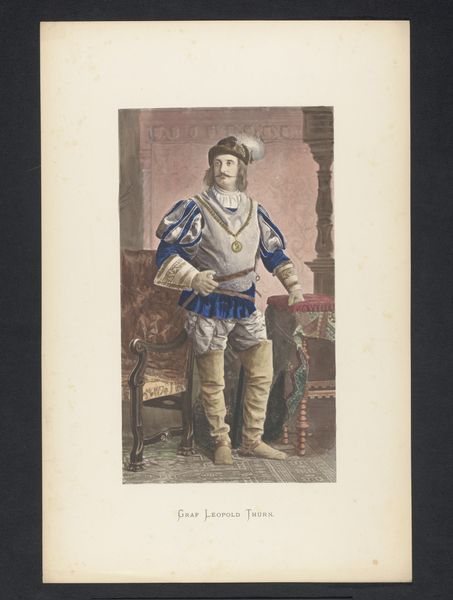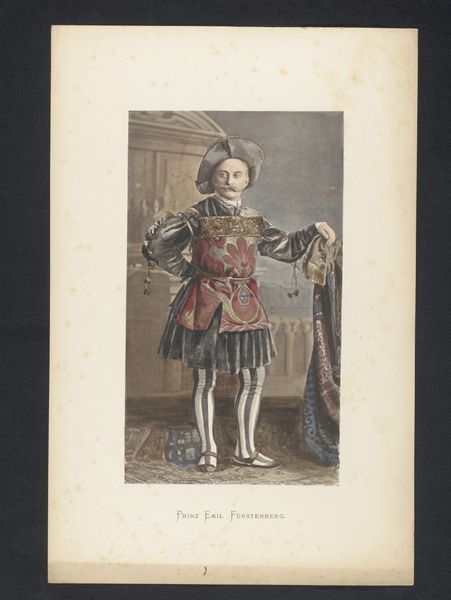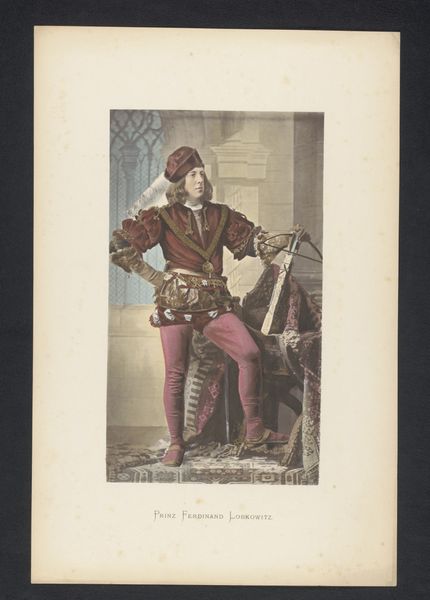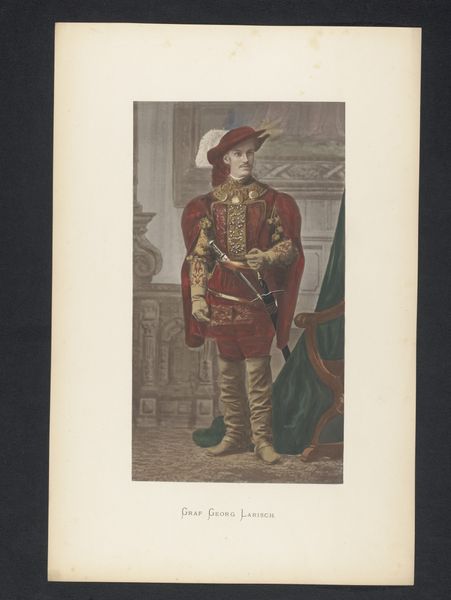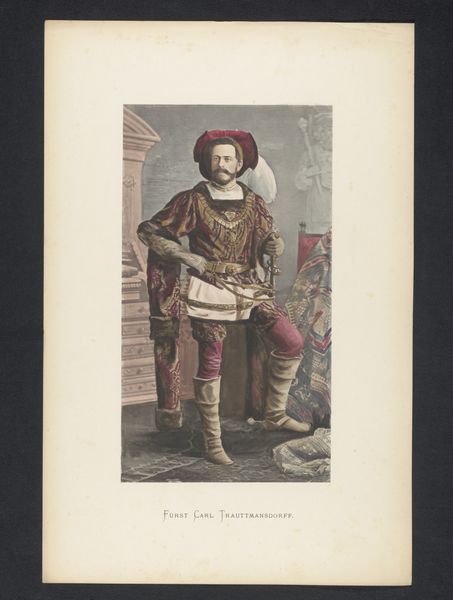
Dimensions: height 364 mm, width 211 mm
Copyright: Rijks Museum: Open Domain
Curator: Looking at this print, possibly dating from the 1880s, we see a portrayal of Graf Heinrich von Coudenhove-Kalergi. Editor: He looks…stiff. Grand, certainly, in his historical garb, but there’s a sense of formality bordering on the theatrical. I can almost smell the dye in that clothing! Curator: Indeed, the image seems rooted in a Romanticised past, likely meant to evoke ideas of nobility and perhaps even valor, with the figure placed against this backdrop suggesting the wilderness. Notice the fine details of his garments - each element would carry layers of symbolic meaning relating to social status and family history. Editor: Right, but let’s think about the physical object itself. It's a print, an etching, designed to be reproduced. How many hands were involved? Who commissioned this portrait, and for what purpose? Was it about commemorating lineage, asserting authority? What kind of labour went into it? Curator: It could certainly have been designed for wider circulation as a means of promoting the family’s status, particularly in an era when old aristocratic families felt threatened. His costume serves as a visual declaration, referencing an era of assumed power. The upright posture is so iconic, representing the strength of identity over time, a visual brand carried across generations. Editor: True. The clothes speak volumes, particularly how costly and painstakingly crafted this look probably was! Let's not forget, though, the labour to create an etching like this wouldn't have been easy either. Each of those lines representing clothing texture was created through labor. Even in reproduction, this is designed for specific class-based forms of viewing and interpretation. Curator: I agree; understanding that craft is essential. The details of the image do invite viewers to think of continuity and lineage; perhaps to remember a more perfect past as opposed to the perceived chaos of modernity. Editor: So, in the end, both process and presentation here work in concert: carefully manufactured historical symbolism created through demanding and expensive artisanal printmaking practices. Curator: Precisely! Understanding this helps decode much about its era, aspirations, and perhaps its anxieties, revealing how constructed images and craft carry the weight of culture and ideology. Editor: Definitely. You have offered me a completely new viewpoint on what appears at first glance to be a generic portrait. Thanks for this opportunity to discover the artist's material methods and contextual situation, without sacrificing an interest in its place within historical representation!
Comments
No comments
Be the first to comment and join the conversation on the ultimate creative platform.
